Located deep in the Eastern Himalayas between Tibet and northeastern India is the south Asian country of Bhutan. Officially known as the Kingdom of Bhutan, this landlocked nation is sparsely populated. Despite that, the fact that the country has never been colonized means that its culture has remained intact. This becomes evident as you tour the many places to visit in western Bhutan.
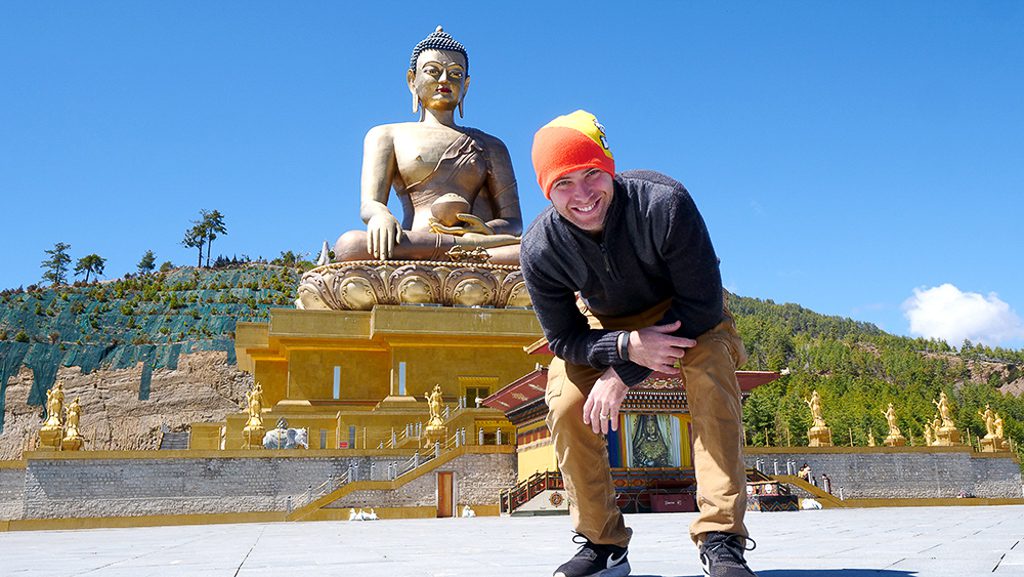
This peaceful nation was unified in 1634 by a Tibetan Buddhist lama named Ngawang Namgyal. He is also known as The Bearded Lama and referred to by the title Zhabdrung Rinpoche. Ngawang Namgyal established a dual system of government, which decreed that control of Bhutan was shared by a spiritual leader and an administrative leader. He also had many prominent monasteries built, including many in the western part of the country.

Western Bhutan is home to some of the country’s most well-known sites, as well as its most populous cities. I spent eight incredible days touring the region with MyBhutan in March of 2020 and fell in love with it. From the stunning valleys and breathtaking mountain vistas to the beautiful culture to the warm-hearted people, it was easy to feel at home there, even as a traveler. These are the top 10 places to visit in western Bhutan.

The city of Punakha rests in the fertile Punakha Valley at the confluence of the Mo Chhu and Pho Chhu rivers. It served as Bhutan’s ancient capital city until 1955. It’s the country’s second-largest city after Thimphu, which lies 72 kilometers to the southwest. Punakha also lies at a lower elevation than other cities in the area, making its climate much warmer than places like Thimphu and Haa Valley.

While Punakha is smaller than Thimphu, population-wise, the city is more spread-out, making transit times between attractions upwards of 30 minutes or more. For that reason, I recommend dedicating at least two or three days to exploring Punakha.
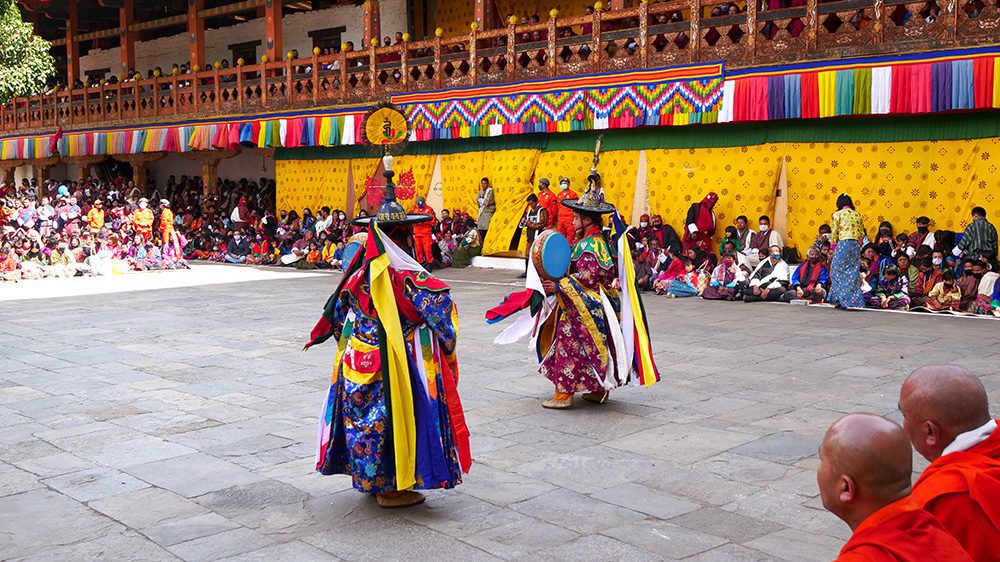
If you visit in March, check out the Punakha Tsechu Festival, which is held at the gorgeous Punakha Dzong fortress. The six-day festival combines dance, music, storytelling, elaborate costumes, and ancient mysticism in dozens of one-of-a-kind performances. Even if you don’t visit in March, you can still explore Punakha Dzong, which boasts some of the most breathtaking traditional architecture in western Bhutan. The dzong alone makes Punakha one of the top places to visit in western Bhutan!

Other notable sites include the Khamsum Yulley Namgyal Chorten, a monastery that was built to protect Bhutan and spread peace and harmony. The 40-minute hike isn’t too strenuous, but I still recommend being moderately fit before attempting it. Cross the prayer-flag-draped Punakha Suspension Bridge to get great views of the Pho Chhu River. For accommodations, it doesn’t get more comfortable than the Drubchhu Resort and the Happiness Field Village Homestay, which also offer some of the tastiest Bhutanese food in the city!
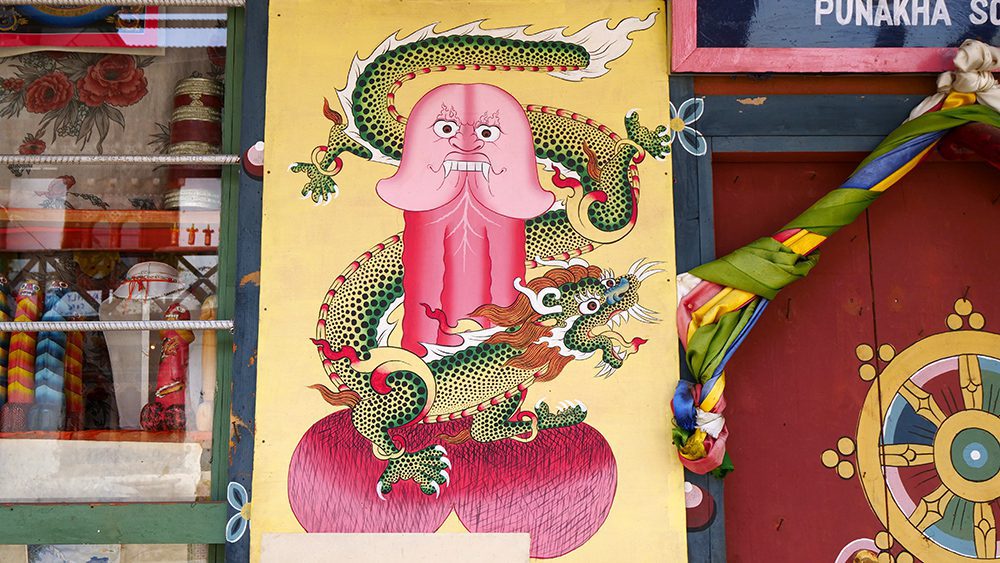
While staying in Punakha, I suggest taking a day to explore some of the nearby villages. One unique but slightly odd village that’s definitely worth a visit is Sopsokha. This settlement is a small, quiet hamlet that’s home to less than 1,000 residents, but that’s not why Sopsokha is so notable. Sopsokha is famous because the outer walls of nearly every home, restaurant, and business in town is adorned with paintings of penises!
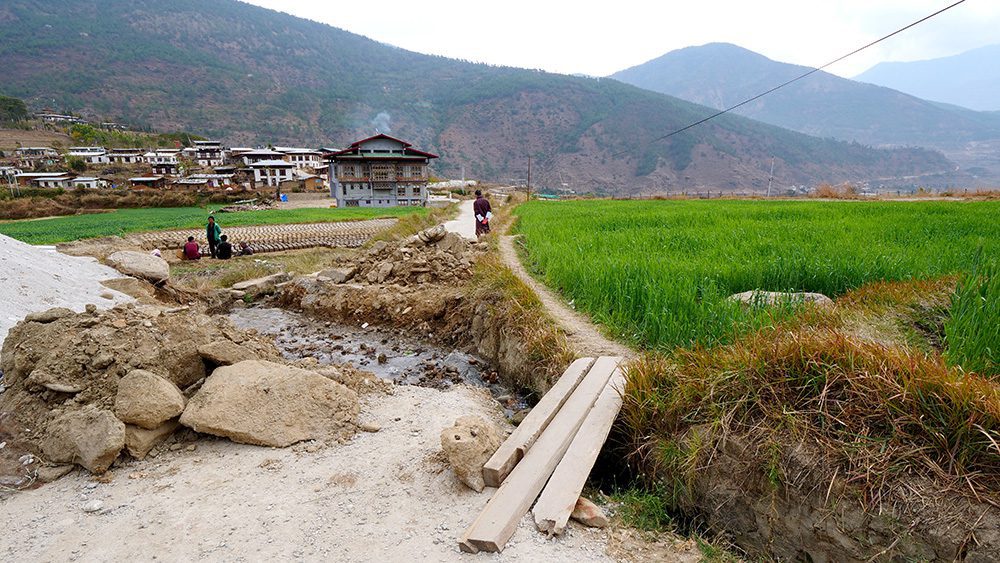
The phallic paintings are every bit as bizarre as you might imagine, especially when considering the mysticism and legends steeped in Bhutanese culture. The penises are often drawn having eyes or even full-on faces. Some of them are simple, while others look angry and scary, and others are even wrapped with dragons!

The phallus obsession in Sopsokha doesn’t end with the paintings. Nearly every shop in town sells penis-shaped souvenirs. They range from small, phallic keychains to decorative phalluses carved from wood. If you’d like a souvenir that’s not phallus-related, you’re in luck, as you can also buy paintings, masks, prayer beads, and more.

The origins of Sopsokha’s phallic obsession comes from nearby Chimi Lhakhang Monastery, which was established by an eccentric Buddhist master known as The Divine Madman. According to a legend, he used his penis to battle a pair of demons that arrived in town. Ever since, the townspeople have used phallic symbols for protection and as a sign of fertility. This town easily makes my list of the top places to visit in western Bhutan!
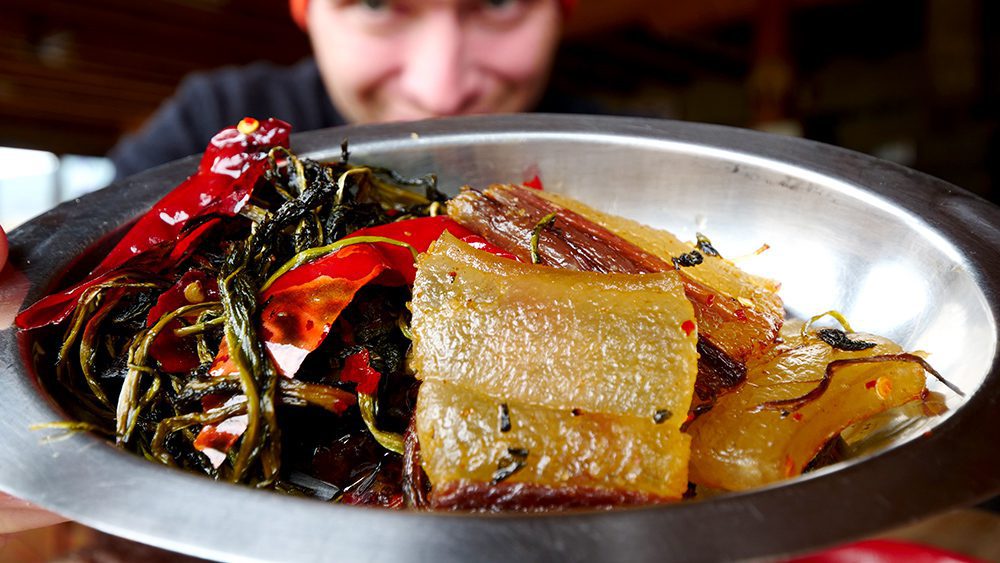
Visit the monastery to see local children training to become monks, and be sure to stop inside the Chimi Lhakhang Organic Café in town for a traditional Bhutanese lunch!

Roughly 30 minutes south of Punakha is Rinchengang, a 17th-century village in the neighboring Wangdue District. The village is located on a hillside above the Puna Tsang River, among a sea of rice paddy fields. It’s believed to be one of Bhutan’s oldest villages and is the perfect place to immerse yourself in traditional local life.

Visiting Rinchengang is like taking a trip back through time. I recommend starting at the top of the village and following the main path down to the bottom. Along the way, you’ll find massive, multi-generational houses; old-time stonemasonry; brick-and-wood buildings, and much more. It reminded me of a village I visited in Turkey once, and is definitely one of my favorite places to visit in western Bhutan.
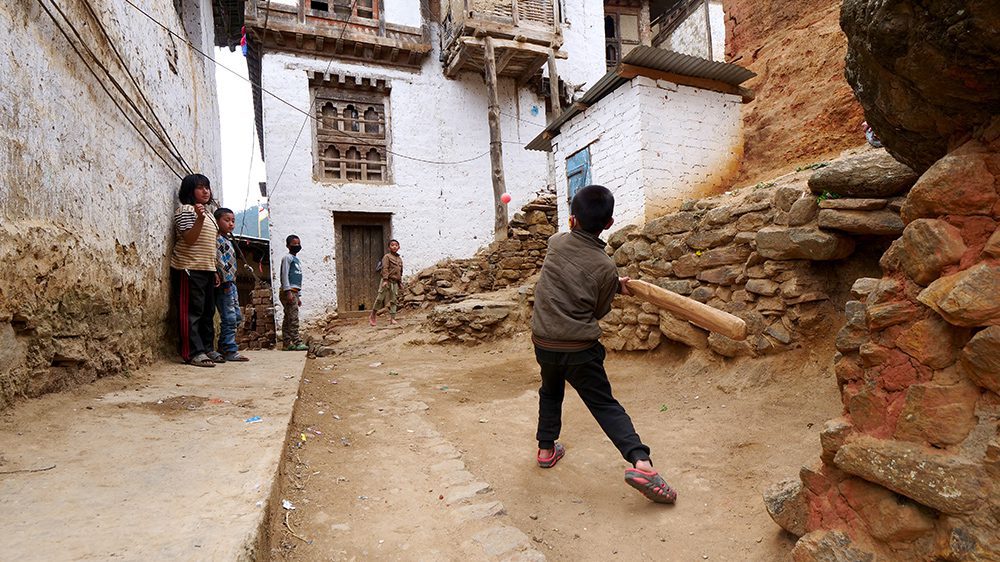
Keep in mind, Rinchengang is a real village where locals live, so don’t expect to find much in the way of souvenir shops or anything that caters to tourists. As you walk its paths, expect to come across kids playing cricket and dogs and cows roaming the town. As you explore, keep your eyes peeled for fleeting views of the Wangdue Phodrang Dzong across the river. If you have the time, take a trip there to visit it!

Unlike Rinchengang, which is very compact, the nearby village of Rubesia is much more spread-out. You can get there by following a narrow, bumpy road that winds through the mountains. If you’re touring the country with MyBhutan, they’ll arrange a way for you to visit a local home. The residents will graciously provide you with a meal.

The meal will likely consist of cereals like flattened corn and rice with a milk tea called ngaja. As your tour of Rubesia continues, you may come across locals taking part in the national sport, archery. I recommend trying your hand at it, but be prepared to be terrible at it. The locals are practically professionals!

Later, you’ll get to enjoy more traditional Bhutanese food. At another local home, I met some women who prepared hollow, deep-fried rice flour balls called maku. These nutty and crispy rice balls are similar to Indian puris. You can eat them alone or with a spicy chili salsa called ezay.
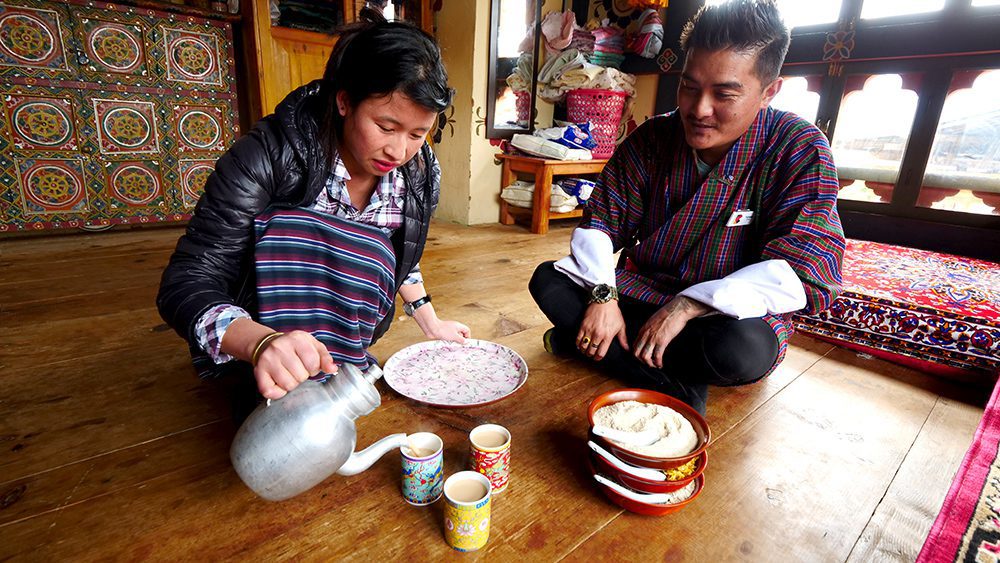
Afterward, enjoy a full-on meal with your gracious hosts. Mine included the national dish, ema dashti (chilies with cheese), along with lots of delicious sides!

Bhutan’s capital and largest city is Thimphu, a relatively new city in a valley along the Wang Chhu River. It’s the country’s political and economic center and is a hub for Bhutanese culture as well. Before Thimphu became the capital, it was made up of several small hamlets scattered around the valley, but now it’s a densely populated city with tons of things to offer curious travelers.

As you arrive in town, you’ll likely notice a massive Buddha statue that looks over the city from a nearby mountain. This is the Buddha Dordenma, a gilded bronze statue of the sitting Buddha in Kuenselphodrang Nature Park that stands 177 feet tall. Pay the Buddha Dordenma and its square a visit, and don’t forget to go inside to see thousands of smaller Buddha statues. The statue alone is one of my favorite places to visit in western Bhutan.
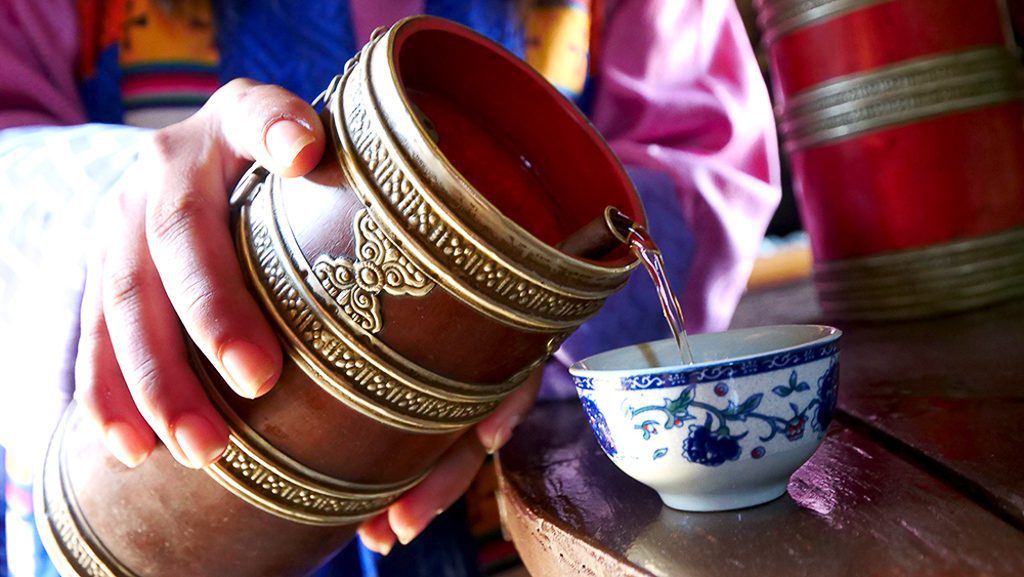
If you’d like to get an interactive look at Bhutan’s cultural heritage, check out Simply Bhutan, a museum that also offers traditional Bhutanese fare. Go with the ema dashti and buckwheat noodles.

You can also check out Centenary Farmers’ Market on weekends and explore the 17th-century Tashiccho Dzong, where you’ll find tons of gorgeous paintings and carvings.

Visit Changangkha Lhakhang Monastery to see where local newborns get named and blessed, and check out the Cordyceps Tasting House to try tea and whiskey that has been infused with a unique caterpillar! For a more unique experience, get a photo on your phone printed on real stamps at the Bhutan Postal Museum. You can use them to mail a postcard to friends or family!

One of my favorite spots in town is Chagri Dorjeden Monastery, which requires a hike through Jigme Dorji National Park. The hike will take you up a mountain, and at the top of the monastery, you’ll enjoy stunning views of the valley and river below.

When you’re feeling hungry, check out Thakali Kitchen, where you can try Nepali cuisine. For traditional Bhutanese food, stop by Typical Bhutanese Restro & Bar or Kalden Restaurant. At night, lay your head at the Pedling Hotel & Spa, which offers comfortable, modern rooms and a great restaurant to have breakfast, lunch, and dinner!

Situated along the highway between Thimphu and Punakha is Dochula Pass, a mountain pass that lies 10,200 feet above sea level. The pass is famous because it is the site of a memorial called the Druk Wangyal Khang Zhang Chortens.

The memorial consists of 108 beautiful stupas, which are arranged along a hillside in Dochula Pass. The stupas were built in 2004 to commemorate Bhutanese soldiers who died in combat while fighting insurgents from the state of Assam in northeast India.

The largest stupa stands atop the hill, with the other 107 scattered below it. There are 108 of them because the number is sacred in Buddhism. Each stupa is brightly painted and ornately decorated with script and an idol of the Buddha inside it. If you visit the memorial on a clear, sunny day, the surrounding mountains make a magnificent backdrop!

As you head west from the city of Paro, you’ll come across the highest mountain pass in the country along the Bondey-Haa Highway. This pass is called Chele La, and is a whopping 13,083 feet above sea level! The road to get there can be tricky to navigate and has lots of sheer drops on one side, so I highly suggest hiring a driver who knows the road well.

At Chele La Pass, you’ll have pristine views of the surrounding mountains and valleys, including Mount Jomolhari, Bhutan’s second-tallest mountain. You’ll also find lots of prayer flags, including white ones used to commemorate the lives of deceased loved ones, and the more vibrant multi-colored ones.
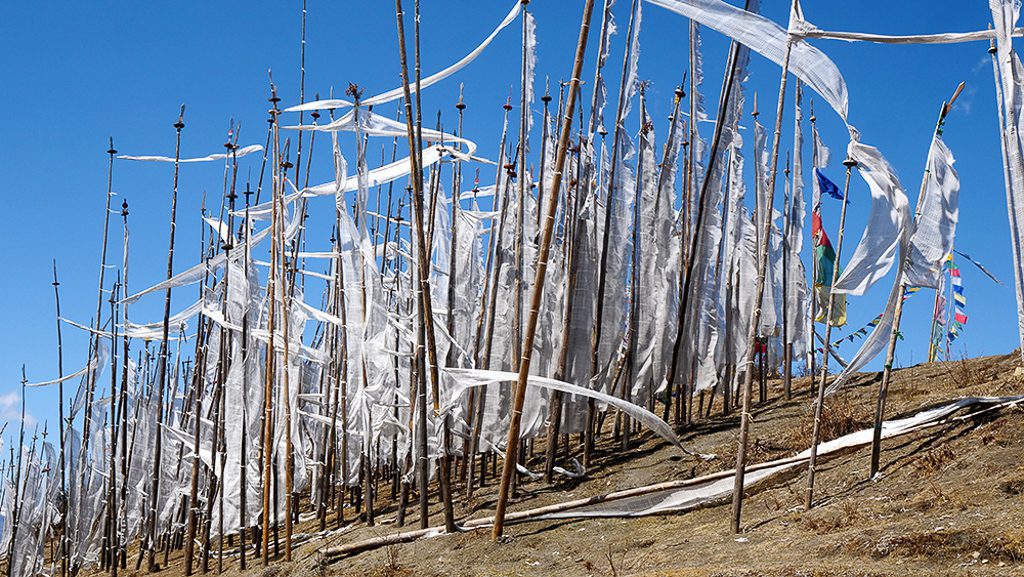
Definitely pack a sweater or a jacket if you want to explore the pass, as it’s incredibly chilly up there. I also recommend gloves and a beanie. Try not to overexert yourself, as the air is thin and you may have trouble catching your breath. And stay away from the local yaks, as they’re not very nice!
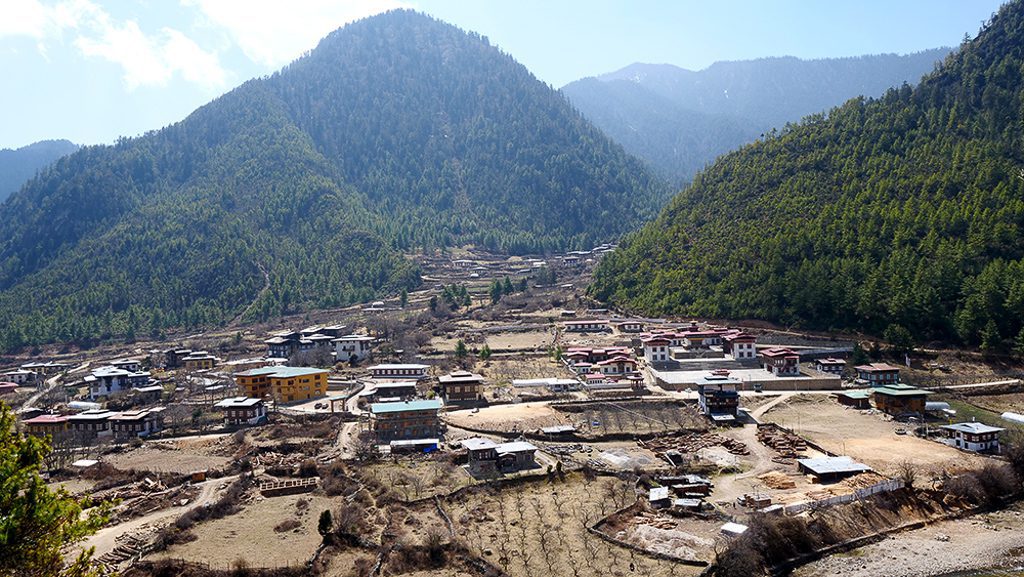
Although people have been allowed to visit Bhutan for many years, it may come as a surprise to some that the area known as Haa Valley was off-limits to travelers until 2002. This beautiful region west of Paro is still among Bhutan’s least-visited areas, so it’s still very much a hidden gem to most.
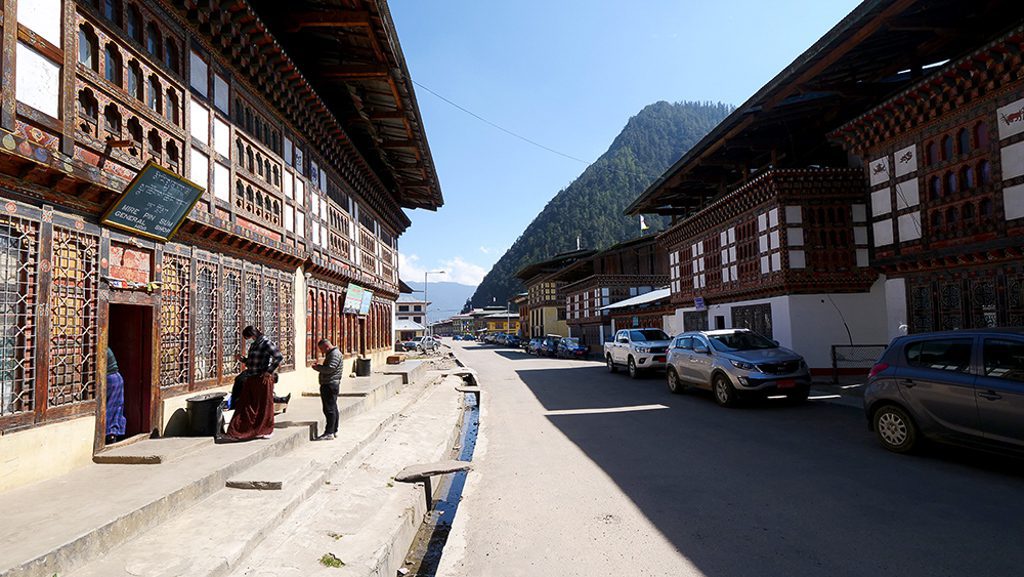
Resting at the very bottom of the narrow valley floor is the town of Haa. The hillsides and mountainsides that rise up around it are covered in alpine forests and terraces that grow crops like potatoes and chilies.
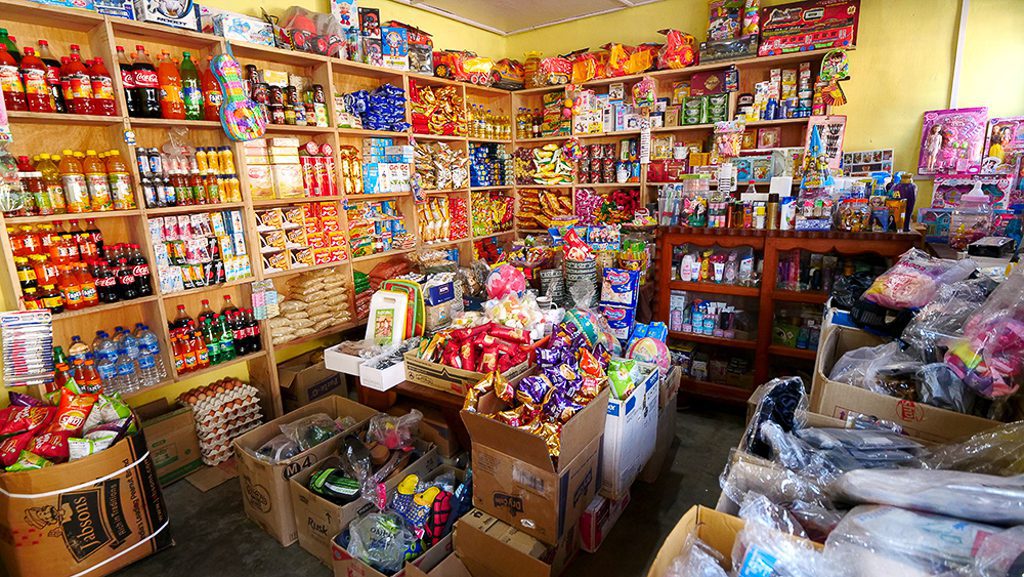
The town itself is quiet and peaceful, and its streets are lined with buildings containing general stores, restaurants, and apartments. There’s lots of traditional architecture to be found, and plenty of places to buy souvenirs. You can also try a local buckwheat dumpling called hoentay at Pedlen Restaurant and at the Risum Resort, which is also the best place in town to stay.
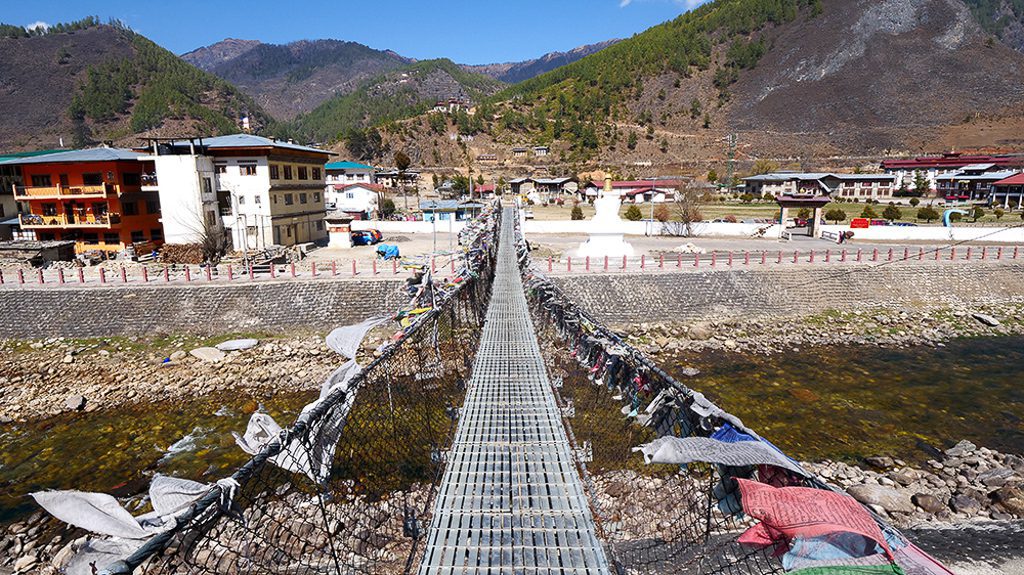
To visit the area’s most popular attractions, you’ll have to cross the suspension bridge over the Haa Chhu River. After a bit of a hike along the river, you’ll come across Lhakhang Karpo, also known as the White Temple. This large, Buddhist temple is made up of several buildings that surround an enormous courtyard.
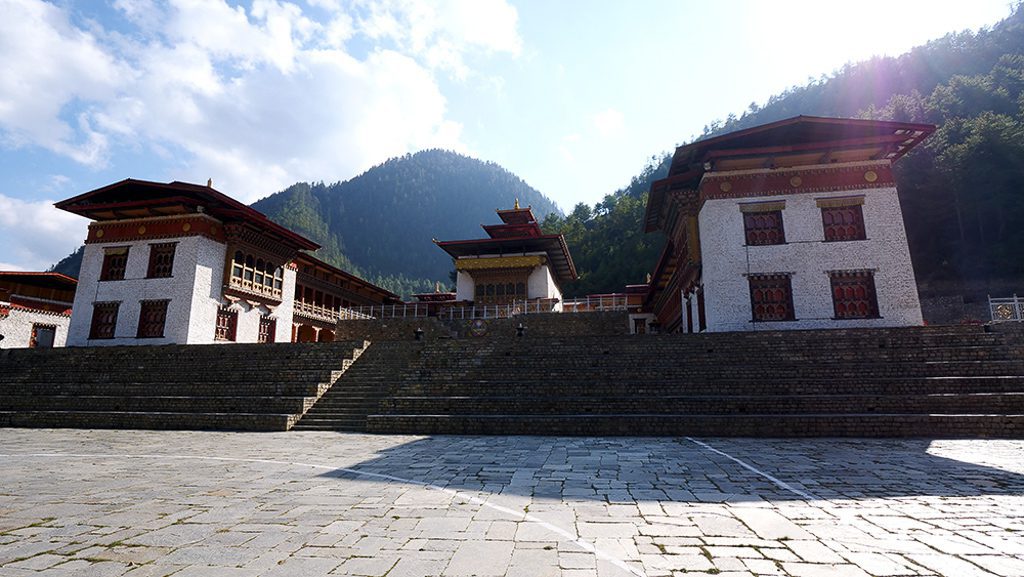
Futher along the hiking route is Lhakang Nagpo, or the Black Temple. This temple is much smaller than its sister temple. It is said to have been built atop an underground lake that’s home to a mythical mermaid spirit called a tshomen. Inside, you’ll find statues of Ngawang Namgyal and the second and future Buddhas.
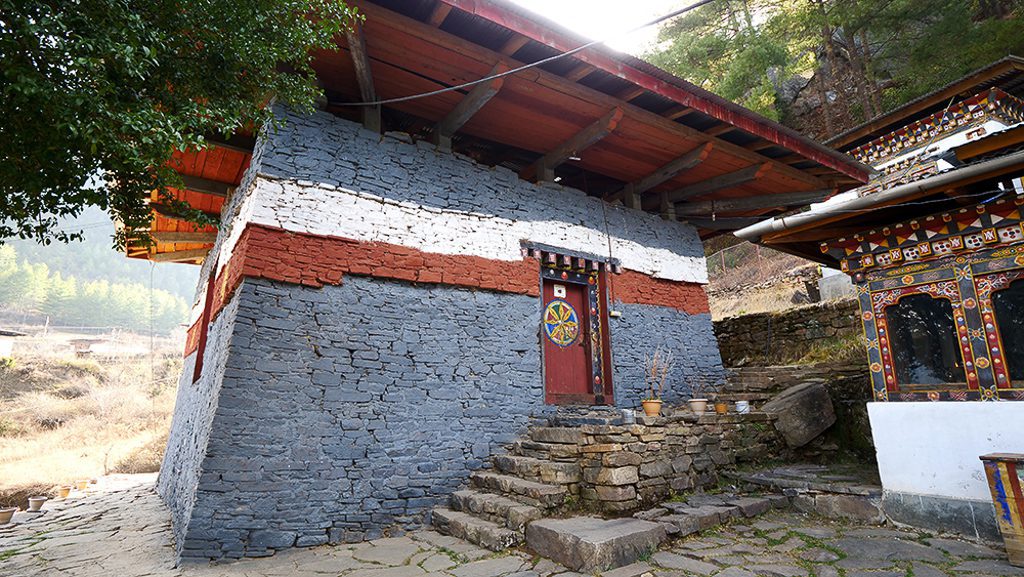
Both temples are unique and so different from one another, which makes them two of the best places to visit in western Bhutan.
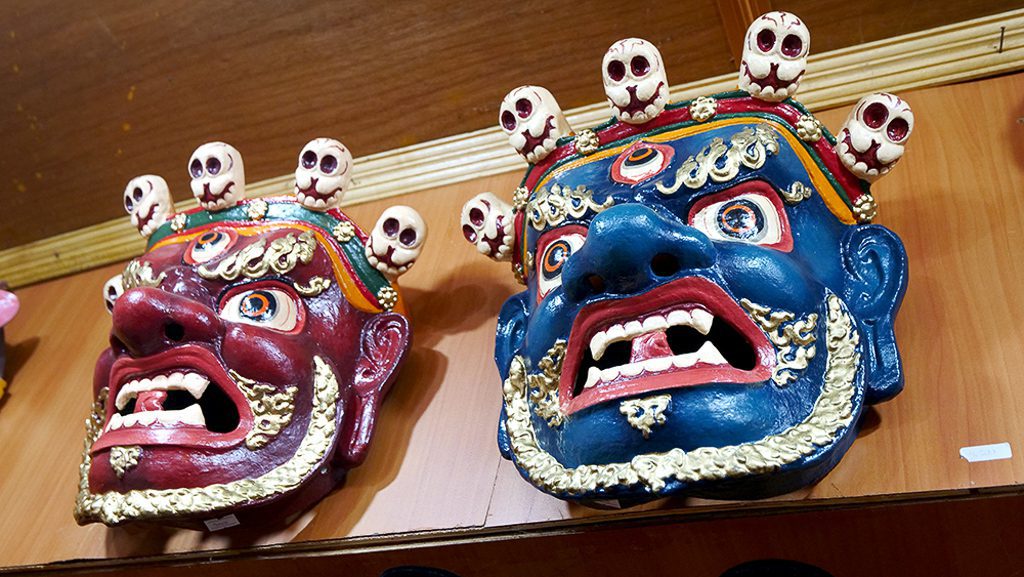
Every traveler arriving to Bhutan by plane will land in Paro, which is home to the country’s only international airport. The town is small, with only 11,448 residents, but it’s full of history and sacred sites. It’s like two towns in one, as one side of the city is home to traditional homes and buildings, while you’ll find modern buildings made of concrete on the other side.

Traditional architecture can be seen all along the main street, where you’ll find plenty of restaurants and shops. In fact, Paro is known as the Souvenirs of Bhutan due to its number of handicraft shops, where you can buy locally-made hats, scarves, and even masks.

To try some of the best momos in Bhutan, head over to Champaca Café. At this cozy and comfortable eatery, you can try several varieties of their mouthwatering momos, including those that contain chicken, beef, pork, potatoes, or cheese. I suggest having them with some ezay for an added kick of spice. You can also try the suja, which is a buttery tea, but it’s a little too intense for me!
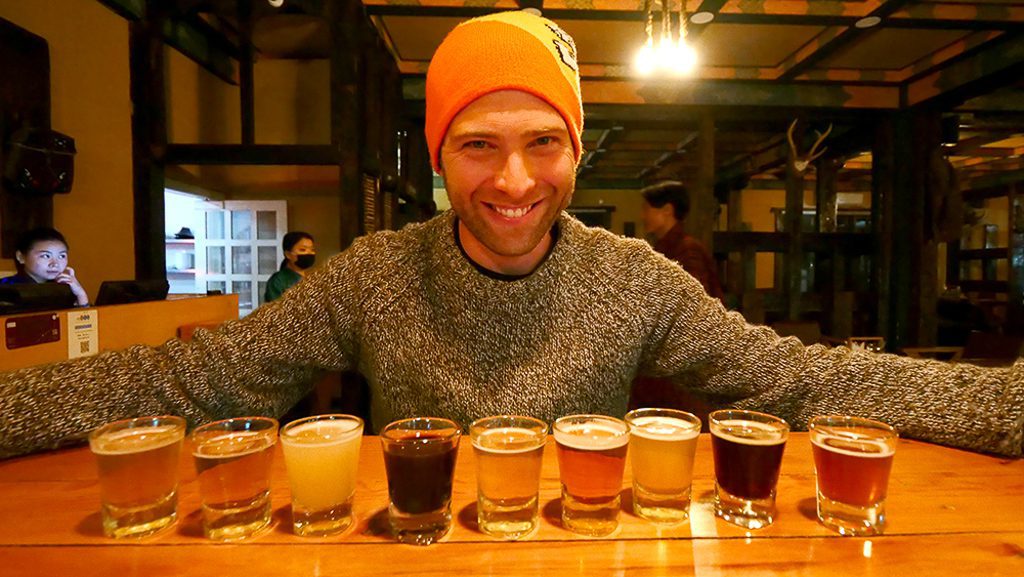
Paro is also the perfect place to dive into Bhutan’s craft beer scene, as it’s home to Namgay Artisanal Brewery. This brewery is the only one in Bhutan that makes beer from the native red rice. The brewery produces nine types of beer, five of which can only be tried on tap at their facility. Take a tour of the brewery and then enjoy a fantastic set menu meal that consists of ema dashti, pork with gravy, cucumber salad, kewa dashti, spinach soup, red rice, and much more!
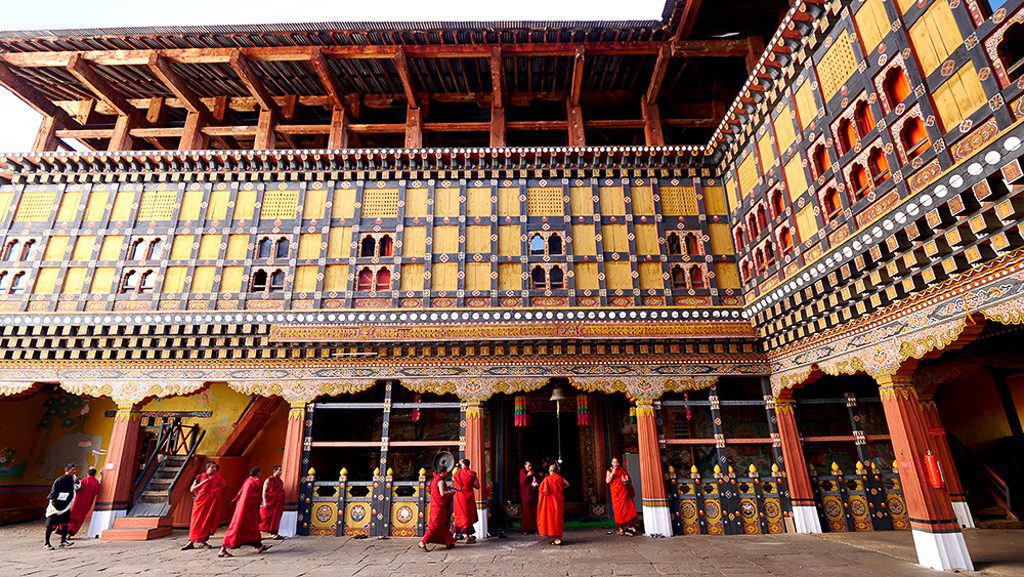
While you’re in town, don’t miss Rinpung Dzong, a gorgeous and colorful fortress that was built in 1646. Explore the courtyard and be sure to marvel at the vibrant paintings of deities and other figures throughout the complex. You can get spectacular views of the entire valley from the balcony on the fortress’ lower level. It’s incredible, but the real adventure in Paro is about 10-12 kilometers north of town.
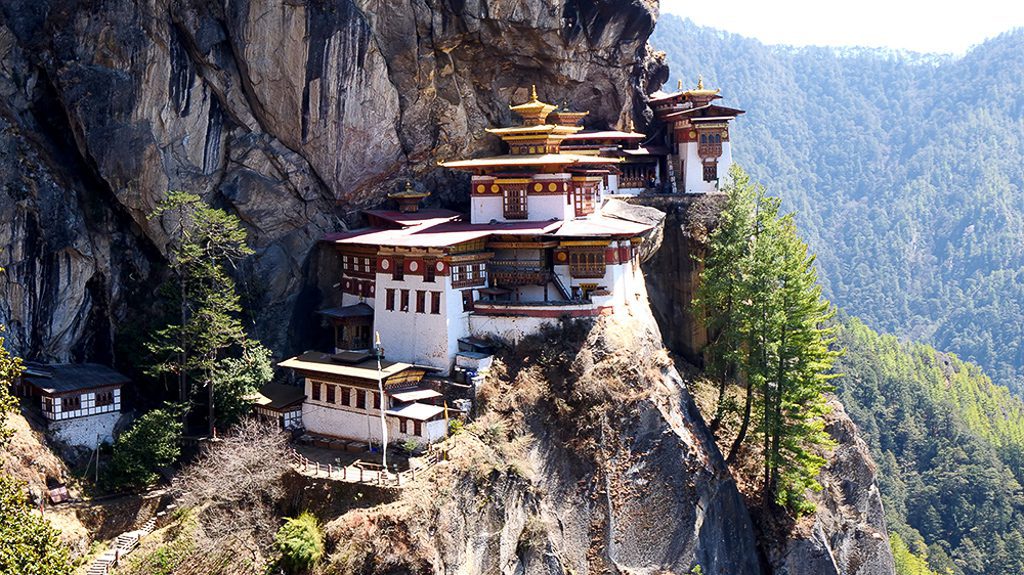
Located roughly 10-12 kilometers north of Paro is the world-famous Paro Taktsang Monastery, better known as Tiger’s Nest Monastery. Not only is it the most popular attraction in the Paro area, it’s also the most visited in all of Bhutan. This sacred monastic complex clings to the side of a cliff high above the upper Paro Valley. It was built around a cave where an 8th-century Buddhist master meditated for four months.
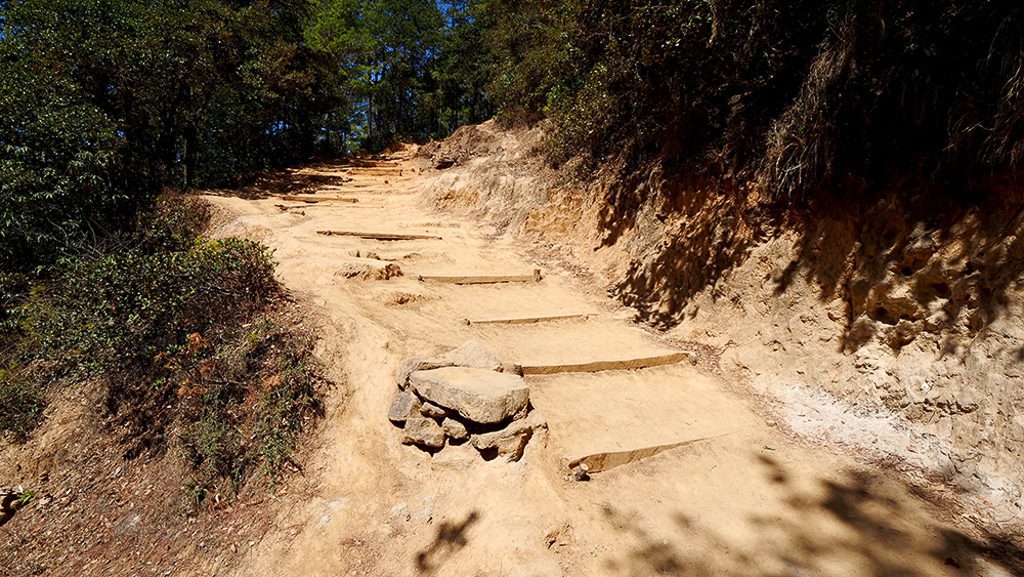
Tiger’s Nest’s location means you have to work hard to get there. The only way to do that is a hike up a steep and sometimes treacherous trail up a forest-covered mountain. The hike takes most people about three hours, so be prepared to dedicate half a day to Tiger’s Nest. It goes without saying that you should be in at least moderately good shape before attempting this hike. I’m in pretty good shape and it was difficult for me!

At the hike’s midpoint is the Taktsang Cafeteria. There, you can refuel with traditional dishes before taking on the second half of your hike. You’ll get clear views of Tiger’s Nest on several occasions as you follow the trail as it weaves its way through the forest.

After a more gradual hike, you’ll pass a waterfall and finally arrive at Tiger’s Nest. There, you can explore its grandeur to your heart’s content. Just keep in mind that, although it’s a heavily touristed location, it’s still a sacred monastery. So be kind and respectful, and follow all of the rules. This means you can’t film or take photographs inside the complex.

Visiting Tiger’s Nest was a dream come true for me. I had been wanting to visit it ever since I became a full-time traveler in 2008. And even though I finally realized my dream on one of the most hectic days of my life (more on that here), I temporarily had peace there.
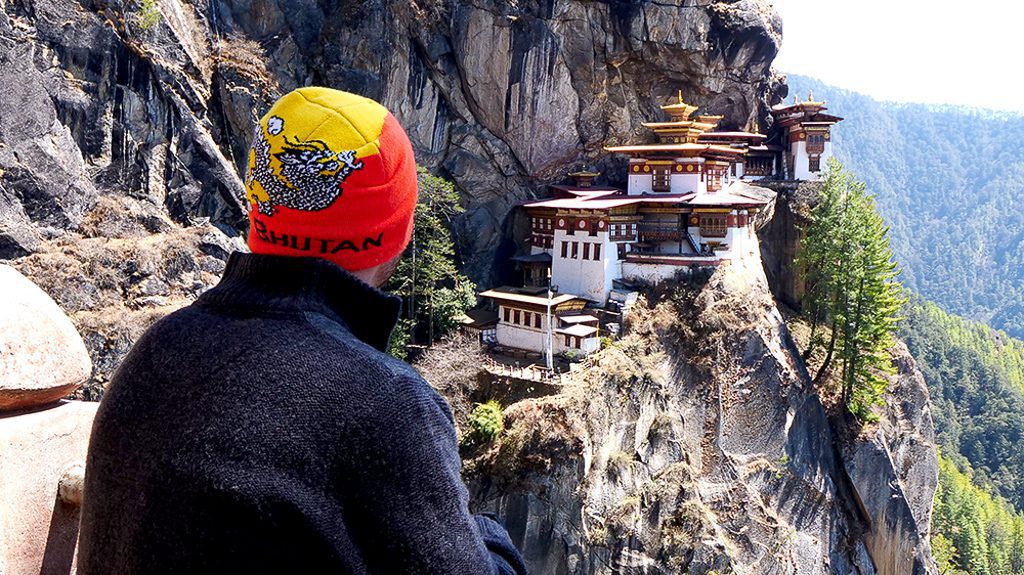
I took the time to light a butter lamp to pray for my friends and family, and everyone affected by the COVID-19 pandemic, and then made the slow climb back down to the bottom of the trail. The spiritual experience you’ll have there makes Tiger’s Nest Monastery one of the top places to visit in western Bhutan!

For a country that still isn’t very well-known to Westerners, Bhutan is chock-full of adventure, intrigue, and once-in-a-lifetime experiences. The places you’ll visit in the country are astounding. Each one has its own charm and its own feel, which makes each one unique. But while this article is about the places, I must say, the people make the place. And for me, the Bhutanese people were nothing but kind and warm and welcoming. It made the country that much more special. Book a flight to Paro today to experience the top 10 places to visit in western Bhutan. You won’t regret it!
Huge thanks to my friends Tsheten and Nidup from MyBhutan for showing me around their beautiful country!
NOTE: If you need to check the visa requirements of a particular country, click here. To apply for a visa, find up-to-date visa information for different countries, and calculate the cost of a particular visa, click here!
Counter
101 Countries • 1432 Cities